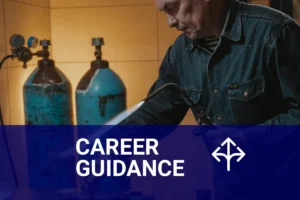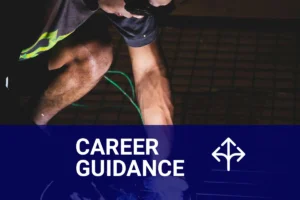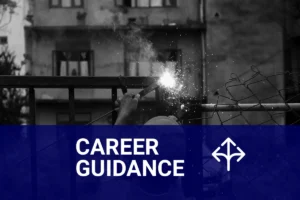How to Get Journeyman Welding License? Essential Steps, Types, and More
Published on: November 26, 2024 | Last modified: March 4, 2025
By: Joe Carter
A journeyman welding license is a certification that shows you’ve got the skills and knowledge to work as a professional welder. It proves you’ve completed training and practical experience in the field.
So, how to get journeyman welding license? It’s important to follow the right steps because this license opens many doors in the welding industry. From my experience, having this certification not only boosts your job prospects, but also increases your earning potential and makes you more respected among your peers.
In this guide, we’ll dive into what a journeyman welding license is, types of licenses available, essential prerequisites, steps to obtain one, common challenges, and the benefits of having it. We’ll also touch on industry uses, alternatives to licensing, and frequently asked questions to help you understand how to get a welding license.
Contents
- How to Get Journeyman Welding License?
- What is a Journeyman Welding License?
- Types Of Journeyman Welding Licenses
- Essential Prerequisites to Get Started
- Steps to Get a Journeyman Welding License
- Precautions
- Types Of Certifications for Journeyman Welding
- Factors Affecting the Process Of Getting a Journeyman Welding License
- Typical Issues for Obtaining a Journeyman Welding License
- Why This is Worth It: Advantages
- Industry Uses Of a Journeyman Welding License
- Are There Any Alternatives to Getting A Journeyman Welding License?
- Frequently Asked Questions (FAQs)
- Conclusion
- Additional Reading
How to Get Journeyman Welding License?
A journeyman welding license signifies skilled welders. To get this license, complete 4,800 hours of on-the-job training and pass a certification exam. It’s tough, but it’s key for many welding jobs.
What is a Journeyman Welding License?
A journeyman welding license is a certification that proves you’ve mastered essential welding skills. Typically, it requires several years of training and hands-on experience. Most states require about 4-8 years as an apprentice before you can qualify. Obtaining this license not only confirms your skills but also enhances your job prospects; studies show licensed welders earn 10-20% more than those without.
Now, let’s discuss how to get your journeyman welding license. This process involves working under a licensed welder and completing a specific number of hours—typically 2,000 hours (About One Year) of hands-on experience. I remember my own journey; it took hard work and focus, especially to become familiar with various welding techniques and safety standards.
When I worked on a large construction project, my journeyman welding license helped me secure better jobs. I quickly transitioned to more complex tasks and worked with different metals like stainless steel and aluminum. Plus, having that credential opens doors—whether you want to know how to get a welding license in New York or explore requirements for a B pressure welding ticket, it’s crucial to have that solid foundation from a journeyman program.
Types Of Journeyman Welding Licenses
-
Pipe Welder License
A pipe welder joins pipes using various techniques. To earn this license, you’ll need specialized training. Start by finding a school or apprenticeship where you can learn pipe welding methods like TIG (Tungsten Inert Gas) or stick welding.
-
Structural Welder License
This license is for welders who work on large structures like buildings and bridges. To obtain it, you’ll need to develop skills in welding various structural materials. Enroll in a trade school and practice welding structural beams and shapes under supervision.
-
TIG Welder License
A TIG license indicates specialization in precision welding of stainless steel and aluminum. Completing a training course is essential to get this license. Take classes focused on TIG welding techniques and safety standards, then pass a certification exam.
-
MIG Welder License
The MIG (Metal Inert Gas) license demonstrates your expertise in fast, efficient welding. To gain this license, you must showcase your skills in a controlled setting. Find a training program where you can practice MIG welding and complete a competency test.
-
Flux-cored Arc Welding (FCAW) License
This certification is for welders using a tubular wire filled with flux. To earn an FCAW license, you need to master this technique. Start by enrolling in a welding program that covers flux-cored arc welding and prepare for hands-on assessments to prove your skills. One crucial aspect of mastering welding techniques is understanding the process of a hot pass in welding.
You should now have a good understanding of journeyman welding licenses, their types, and requirements. In the next part, we’ll discuss essential prerequisites to get started.

Essential Prerequisites to Get Started
What do you need to get your journeyman welding license?
- Welding Machine: You’ll need a reliable machine, such as the Miller Millermatic 211, which operates on 240V AC power. It handles various projects and meets different skill levels.
- Welding Certifications: Obtain certifications like the AWS D1.1 Structural Welding Certificate. This is crucial for proving your skills in real-world scenarios, often required by employers.
- Welding Rods: Stock up on specific welding rods, such as E6011 and E7018. These rods are essential for different techniques, like stick welding, and achieving strong joint integrity.
- Practice Panels: Get practice panels made of mild steel, about 1/4 inch (6.35 Mm) thick. They provide a good surface for honing your skills and preparing for the practical exam.
- Welding Inspector: You may need an inspector, such as those certified by INDOT (Indiana Department Of Transportation), to validate your work before attempting the exam. They can guide you toward success.
We covered the essential prerequisites for getting started in welding. Next, we will cover the steps to obtain a journeyman welding license.
Steps to Get a Journeyman Welding License
Here are the essential steps to acquire your journeyman welding license.
-
Complete a Welding Training Program
Enroll in a recognized welding training program. Most programs last 6 to 24 months. Look for accredited schools, as completion is often required by states or employers. You’ll learn key techniques and safety practices and may gain certification in specific welding types like MIG (Metal Inert Gas) or TIG (Tungsten Inert Gas).
-
Gain Hands-on Experience in the Field
Seek apprenticeships or entry-level positions. A typical requirement is at least 2,000 hours of work—often a year or more. Real-world experience sharpens your skills and gives you insight into welding career practices. Exposure to different welding environments broadens your perspective and builds your confidence.
It is also essential to be aware of health risks and ways to prevent cancer from welding to ensure your well-being in the long term.
-
Pass the Required Exams
Study and prepare for the exams specific to your state or contractor. You’ll likely need to pass both a written and practical exam. Familiarize yourself with various welding standards, as regulations can differ by location, like the AWS (American Welding Society) standards.
-
Submit Application for the License
Gather your exam results and training certificates to apply for your journeyman welding license. Confirm local requirements, as each state has different application fees and documentation. Some states may also require additional credentials, like a medical exam to ensure you meet health standards. Submit your application accordingly and keep a copy for your records. When setting up your workspace, it is important to determine how high a welding table should be to ensure comfort and safety.
-
Renew the License Periodically
Every few years, renew your license. Stay informed about renewal intervals and any continuing education requirements. For example, some states mandate courses covering new technologies or methods. Keeping the renewal process routine helps you maintain your credentials and stay competitive.
So far in this section, we covered the steps to obtain a journeyman welding license. In the next section, we will talk about safety precautions.
Precautions
Let’s quickly review essential safety measures for obtaining a journeyman welding license.
- Proper Ventilation: Ensure your workspace has good airflow; use fans like the Vornado 630 Medium Air Circulator. Avoid inhaling harmful fumes.
- Protective Gear: Always wear appropriate gear, such as the Lincoln Electric Welding Helmet, which protects your eyes and face from sparks.
- Fire Safety: Keep a fire extinguisher nearby, ideally a 10 lb (4.5 Kg) ABC extinguisher for flammables. Know how to use it.
- Grounding Equipment: Ensure proper grounding of welding equipment to prevent electric shocks. Use multimeters to check connections regularly.
Safety precautions are crucial in welding—don’t overlook them. I can’t stress this enough!
Types Of Certifications for Journeyman Welding
Let’s look at the various types of certifications, including AWS, NCCER, CWB, state-specific licenses, and specialty certifications.
-
American Welding Society (AWS) Certification
The AWS offers several certifications essential for your journeyman welding license. These include the Certified Welder program, which focuses on practical skills. You’ll need to pass a welding test and demonstrate your abilities by welding specific materials, like carbon steel or aluminum. When working with materials such as stainless steel, it is crucial to understand the toxic substances released during the process.
-
National Center for Construction Education and Research (NCCER) Certification
NCCER provides a structured path to achieve credentials in welding. Their curriculum includes training, assessments, and certifications. Completing specific courses and passing exams will lead to a recognized credential, useful across the U.
S.
-
Canadian Welding Bureau (CWB) Certification
The CWB is essential for welders in Canada. They offer various certification levels for individuals and companies. To earn a CWB ticket, you need to demonstrate your skills through practical tests on diverse materials, meeting their rigorous standards.
Successful welding involves minimizing imperfections in the weld. It is important to reduce welding spatter during the process to ensure a clean and strong bond.
-
State-specific Licenses
State-specific licenses vary, so it’s vital to check your local requirements. Some states may require additional certifications before you achieve journeyman status. Stay updated on your state’s rules to ensure you’re on the right path.
-
Specialty Certifications
Specialty certifications focus on niche areas like underwater welding or pipe welding. These can enhance your resume and improve job prospects. Based on my experience, earning specialty certifications can significantly boost your skill set and marketability in the industry.
So far in this section, we covered various certifications available for journeyman welding. In the next section, we will talk about factors influencing the licensing process.
Factors Affecting the Process Of Getting a Journeyman Welding License
What factors impact your path to a journeyman welding license?
-
Quality Of Training
A quality training program can enhance your skills significantly. Studies show that 70% of hiring managers prefer candidates who completed a certified program, improving your job prospects.
-
Work Experience Level
Hands-on experience is crucial. Many states require 1-2 years of practical (Real-world) welding experience before you can apply for a journeyman license.
-
Availability Of State Licensing
I once made the mistake of waiting too long to check local licensing. Some states may not issue licenses if laws change or are temporarily unavailable, so always verify.
-
Type Of Welding Specialty
Your specialty can determine your licensing route. For example, a pipe welder may need different certifications than a structural welder, affecting how you get licensed.
-
Compliance With Safety Standards
Adhering to safety standards is essential. Most places require passing safety courses or tests before issuing a journeyman license, highlighting the importance of safety training.
That covers the factors influencing the journeyman welding license process. Let’s now take a look at common issues faced during licensing.
Typical Issues for Obtaining a Journeyman Welding License
Let’s look at the challenges you might face while earning your journeyman welding license.
-
Inconsistent Training Quality
Journeyman welding license programs vary in quality. To assess this, check for NCEES or AWS accreditation and seek feedback from past students. If it’s lacking, look for additional training resources or schools with better ratings.
-
Testing Failures
If you fail your journeyman welding license test, don’t lose heart. I once stumbled by overthinking during the practical test. Review the failure report and focus on key areas like bead width (Width Of the Weld) or slag presence to improve next time.
-
Documentation Errors
Missing paperwork can disqualify you from the journeyman welding license. Double-check application materials for completeness. Use a checklist to avoid these mistakes and keep copies of everything submitted.
-
Logistical Challenges in Scheduling
Scheduling conflicts can delay your journeyman welding license. Identify local testing dates early. Create a timeline that includes all necessary steps, from skills tests to paperwork submissions, to stay on track.
-
Regulatory Changes
Stay updated on regulations for the journeyman welding license. Follow industry news and check state compliance websites regularly. If changes affect your path, adapt quickly or consult mentorship programs for advice.
Why This is Worth It: Advantages
The journeyman welding license opens doors to better job opportunities. It helped me land higher-paying gigs on a major construction project.
This license also boosts your credibility in the field. It enables access to specialized training, increases your skills, and enhances your networking potential. Many employers require it.
Industry Uses Of a Journeyman Welding License
A journeyman welding license is valuable across various industries, including:
- Pipeline Fabrication: Used for installing and repairing pipelines. This skill is crucial due to energy sector demands, making it popular in the gas and oil industries.
- Structural Steelwork: Involves constructing buildings and bridges. It’s vital for ensuring safety in large projects, making it a top choice nationwide.
- Automotive Manufacturing: Essential for car assembly. Welders join parts to enhance durability. Licensed welders are sought after in top workshops for quality production.
- Aerospace Component Repair: Required to fix aircraft parts. This specialized work upholds safety standards in aviation, making licensed welders highly desirable.

Are There Any Alternatives to Getting A Journeyman Welding License?
You might consider options like getting certified through organizations such as the American Welding Society (AWS). This certification could be a solid alternative, especially if you want to specialize without going the traditional route. I’ve learned through hands-on experience that some employers value AWS credentials just as much as a journeyman license, particularly in industries like construction and manufacturing.
Another path is apprenticeships with companies that offer on-the-job training. Programs like these let you gain practical experience, which can sometimes hold as much weight as a formal license. You’re not just earning a wage; you’re learning skills that can pay off right away without the hassle of licensing paperwork.
Frequently Asked Questions (FAQs)
Now let us look at some common questions related to welding. I typically get asked the following:
What is a Journey Level Welder?
A journey level welder is a skilled professional who has completed an apprenticeship and can weld independently. Journey level welders have mastered key techniques and often have at least 4-5 years of experience. In many places, they can perform complex welds and lead small teams. Understanding the intricacies of welding thermocouple wires is crucial for those working with precise temperature measurements, with detailed guidance available on how to weld thermocouple wire.
What is the Hardest Welding Certification to Get?
The hardest welding certification to get is often considered to be the AWS Certified Welding Inspector (CWI). Obtaining a CWI requires specific technical knowledge and extensive experience. Many aspiring welders look into various certifications, and in 2020, it’s noted that only about 50% of candidates pass on their first attempt. Understanding the various welding certifications available can help candidates prepare more thoroughly.
How to Become a Journeyman Welder in Michigan?
To become a journeyman welder in Michigan, you must complete an apprenticeship program and pass required certification tests. Typically, you’ll need about 4-6 years of training, combining classroom education with hands-on experience. It’s crucial to hone your skills for improved precision and evaluate how to see better when welding.
What is the Fastest Way to Get a Welder’s Certificate?
The fastest way to get a welder’s certificate is through a short-term welding program at a community college or technical school. Many programs can be completed in as little as 6-12 months, providing essential skills and necessary certifications like AWS or SMAW.
How Do You Get Your Welding License?
You can get your welding license by passing a certification exam after completing a qualified training program. Many states and industries require specific certifications, and it may take 1-3 years of training to meet those requirements.
Conclusion
We’ve made it to the end, and I hope it was helpful. We covered topics like what a journeyman welding license is, the types available, essential prerequisites, and the steps to obtain one. Additionally, we discussed precautions, certifications, factors affecting the process, issues you might face, aftercare, and the industry uses of a journeyman welding license.
So, how to get a journeyman welding license? Simply put, gather your essential documents, complete the necessary training, and pass the required exams. Don’t hesitate to get in touch for further assistance with any part of this process, from how to get a welding license to the advantages of becoming a certified journeyman.
For more in-depth information and resources to guide you on your journey, visit What is Welding, where we aim to equip you with the latest technical expertise.
Additional Reading
- Cary, H. B., & Helzer, S. C. (2005). Modern Welding Technology (6th ed.). Upper Saddle River, NJ: Pearson.
- American Welding Society. (2021). AWS SENSE: Guidelines for Entry-Level Welders. Miami, FL: AWS.
Joe Carter is a retired welding professional with over 40 years of hands-on experience in the industry, spanning ship repair, structural welding, and even underwater projects. Joe is a master of MIG, TIG, and Stick welding. Passionate about mentoring the next generation of welders, Joe now shares his decades of expertise and practical insights to help others build rewarding careers in welding.
American Welding Society, Journeyman Welding, Skilled Trades, Welding, Welding Certification, Welding Equipment, Welding Industry, Welding License, Welding Table, Welding Techniques, Welding Training







